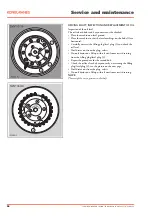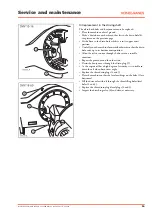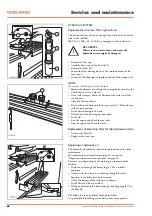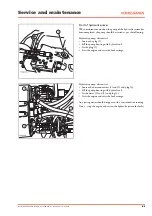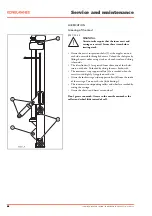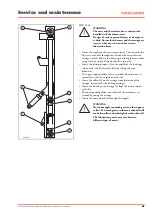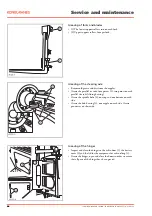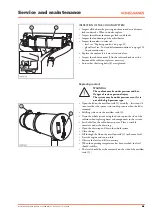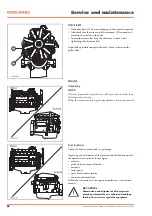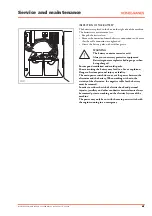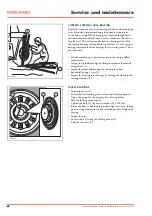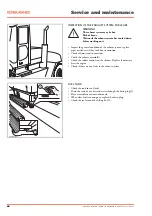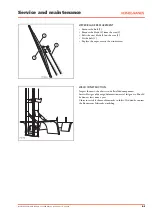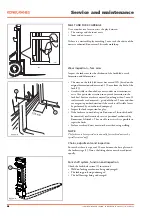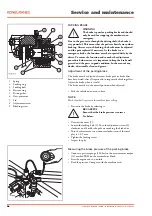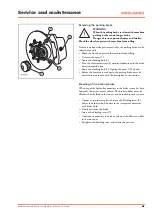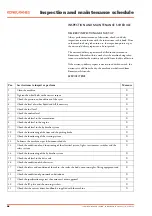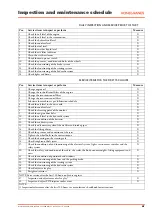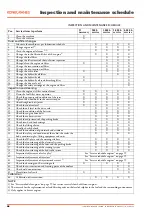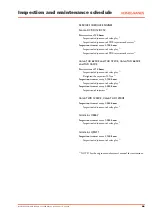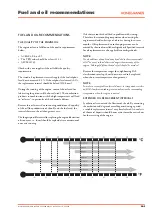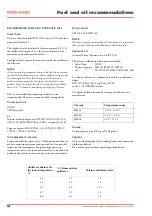
92
Instruction manual SMV 10 600B – 60 1500B Publ. no. 6196.082 1117, Version 02
Service and maintenance
MAST AND FORK CARRIAGE
Use a crowbar or a lever to assess the play between:
• The carriage and the inner mast.
• Inner and outer mast.
If there is a noticeable play exceeding 5 mm, seek the advice of the
nearest authorised Konecranes Lifttrucks workshop.
Wear inspection – fork arms
Inspect the fork arms for the thickness of the fork blade. crack
formation and deformation.
• The wear on the fork blade must not exceed 10% (based on the
original dimension and measured 150 mm from the heal of the
fork (1)).
• Cracks visible to the naked eye must under no circumstances
exist. Give particular attention to any crack formation in the
fork heal. Surface cracks are normally not longer than 5 mm. If
surface cracks are discovered – grind off about 0.5 mm and then
use magnetic powder detection if the crack is still visible (must
be performed by an authorised company).
• Inspect the fork suspension for play.
• If the forks are in need of repair, Konecranes Lifttrucks should
be contacted, or alternatively, service personnel authorised by
Konecranes Lifttrucks. They are able to assess if it is possible to
repair the forks.
• Surface cracks and wear must not be rectified using welding.
NOTE
The forks must be inspected once annually for crack indications by
specially trained staff.
Chains, adjustments and inspection
Ensure that there is a space of 10 mm between the base plate and
the fork carriage (2). If not, the lifting chains must be readjusted
equally.
Fork shaft system, function and inspection
Check the fork shaft system (1) in terms of:
• Weld on locking mechanism being undamaged.
• The locking pin being undamaged.
• The ball bearings being undamaged.

